The largest astronomical instrument in Ukraine is the URAN radio interferometer array. It is really huge, its stations are located many hundreds kilometers apart all around Ukraine: near Kharkiv, near Odessa, and near the Shatsky Lakes in Volyn. We talked to Vyacheslav Zakharenko, the director of the Radio Astronomy Institute of the National Academy of Sciences of Ukraine. He explained us how these radio telescopes work.
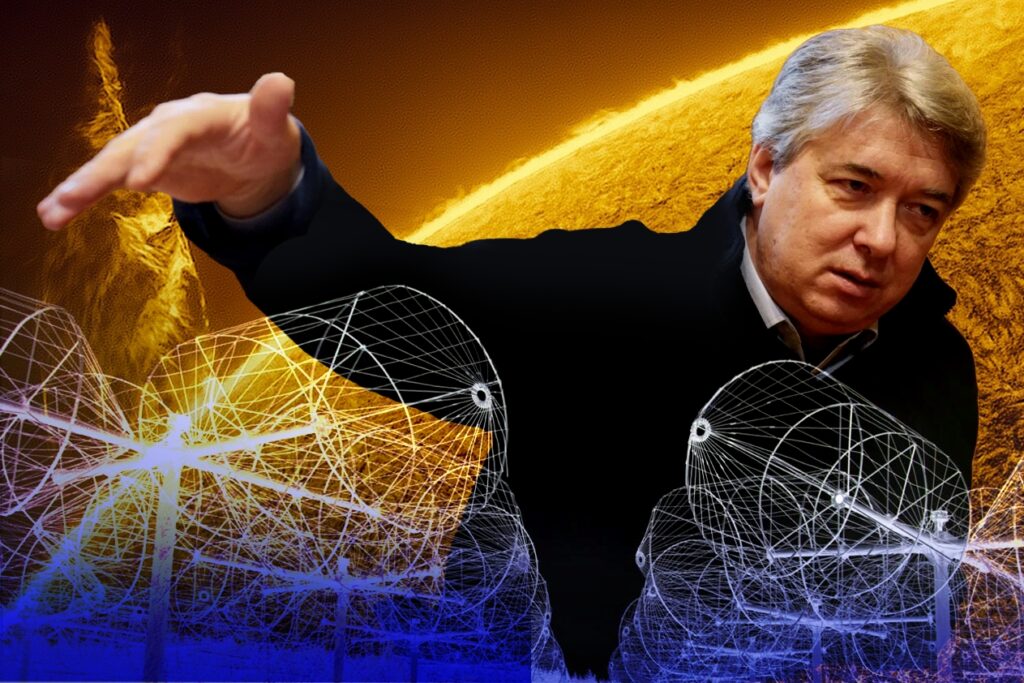
Vyacheslav Zakharenko tells about URAN
The largest radio interferometer in Ukraine
Do you know that Ukraine has a system similar to the Event Horizon Telescope, which a few years ago obtained the first-ever image of a black hole? We are talking about URAN — the Ukrainian Radio Interferometer of the Academy of Sciences.
The system consists of the world’s largest decameter radio telescope UTR-2 and four observatories (URAN-1 to URAN-4) scattered about Ukraine. Each of them represents an antenna array with almost a hundred or hundreds of crossed dipoles, which work as a single instrument. Together, they can operate in interferometer mode. In this case, several signals from telescopes located hundreds of kilometers apart are “combined” (more precisely, multiplied and combined), allowing data to be obtained as if from a much larger instrument.
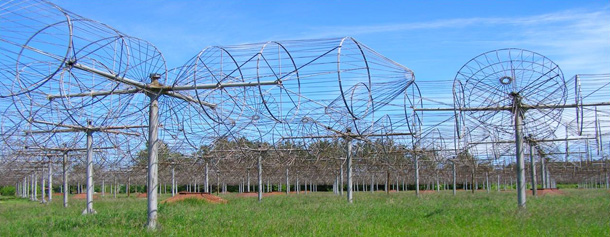
Unfortunately, the largest radio telescope UTR-2, located southeast of Kharkiv, cannot currently join them. Last year, it was under Russian occupation and was looted and destroyed. The process of its restoration is currently underway.
Some words about the system as a whole
URAN is a system of interferometers that includes the UTR-2 radio telescope and covers the entire territory of Ukraine, from Kharkiv (specifically, the observatory named after Semen Yakovych Braude) to the Shatsky Lakes in Volyn and from north to south from the Shatsky Lakes to Odessa. This is approximately 950-960 km. URAN-1 and URAN-4 antennae belong to the Radio Astronomy Institute of the National Academy of Sciences of Ukraine, URAN-2 belongs to the Poltava Gravimetric Observatory of the Subbotin Institute of Geophysics of the National Academy of Sciences of Ukraine, and URAN-3 belongs to the G. V. Karpenko Physical-Mechanical Institute of the National Academy of Sciences of Ukraine.
The largest station, not counting UTR-2, is URAN-2, located near the village of Stepanivka under Poltava. This radio telescope was assigned most of the tasks that UTR-2 carried out. The employees of the Poltava Gravimetric Observatory have done a lot of extra work since the start of the war, related to broadening the scope of research issues, processing and archiving data and care about the institute’s staff.
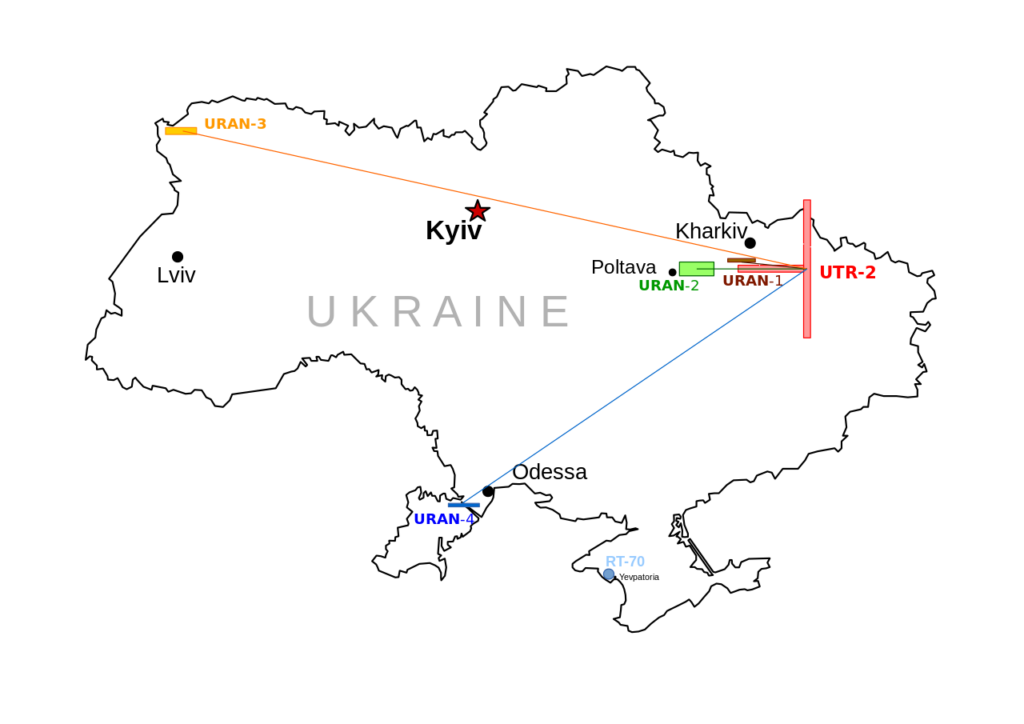
At very low frequencies, even for radio astronomy (15-25 MHz), achieving a better resolution than one arcsecond is impossible due to the scattering of radio emission in the interstellar medium. And the URAN system has a resolution very close to this, which is several arcseconds.
This is the resolution of the system as a whole when all the stations work together. The principle is the same as the Event Horizon Telescope, which obtained the first image of a black hole. There, the signal was also collected from several individual radio telescopes — seven, eight, or ten, depending on the receiving conditions.
We have a similar situation. We have five stations: UTR-2 and four URANs. The URANs have a slightly better antenna than the large telescope in the sense that they have two polarizations, which is important for many studies. However, their antenna fields are significantly smaller, so their effective area, which is the total area of the surface that can receive a signal, is also much more modest. UTR-2 is 150,000 square meters, while all URANs together are only 50,000 square meters. So, overall, they have an effective area of about 200,000 square meters.
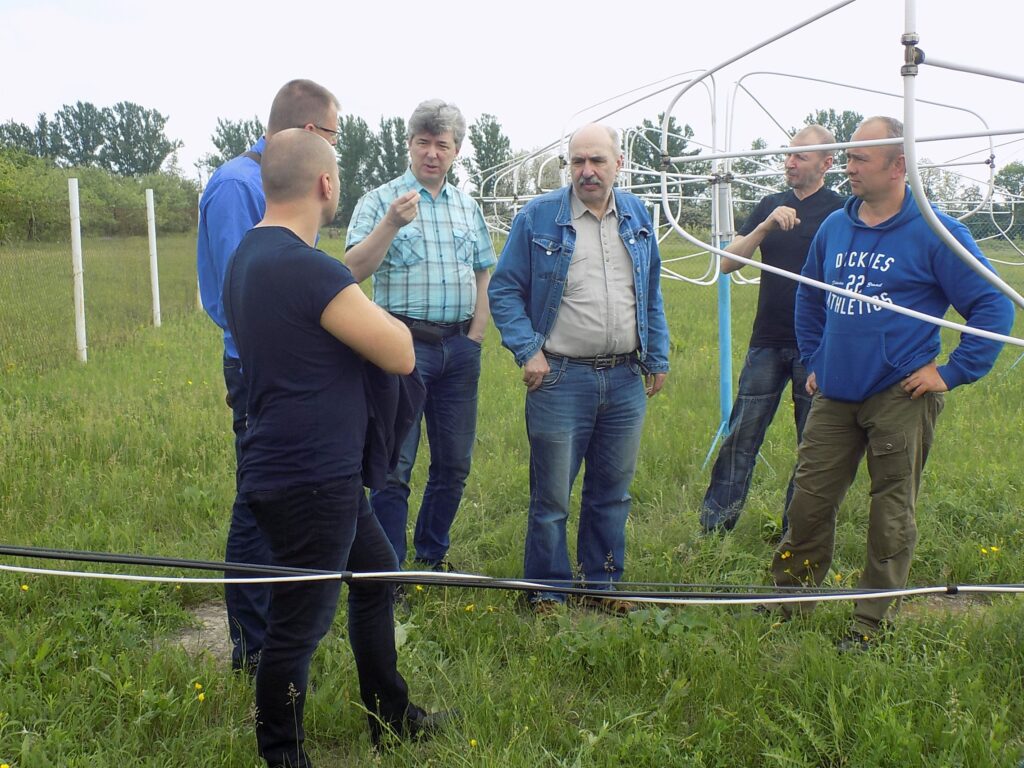
The antennae are structurally similar to those used on the UTR-2 telescope, with the only difference being that each of them contains not one but two dipoles. Thus, URAN-2 has a total of 1024 dipoles, while UTR-2 has 2040.”
URAN-2 is the largest station in the system.
While UTR-2 has twice as many dipoles and is approximately five times more sensitive (with an effective area of around 150,000 square meters compared to approximately 30,000 square meters at the Stepanivka station), URAN-2 is better suited for researching wave polarization. This is important for studying the radiation of Jupiter, the Sun, and some other cosmic objects. UTR-2 cannot receive one of the polarization directions, so researchers have to “calculate” it.
All the antenna arrays of these radio telescopes belong to the filled type, which means they have a much better beam shape, with lower levels of side “petals”. Filled antennas also do not suffer from some of the negative effects associated with diffraction petals, which cannot always be sufficiently suppressed by other telescope parameters. In terms of its shape, URAN-2 has a rectangular field of 240×120 meters (32×16 dipoles spaced 7.5 meters apart) running from east to west.
Since the water table is relatively high in this area, constructing large underground cable tunnels, as done for UTR-2, was impractical. So, they decided to lay cables in trenches and establish their connections in vertical shafts. The rectangles visible in the photos of URAN-2 are actually covers for these shafts, which are necessary to prevent water and debris from entering.
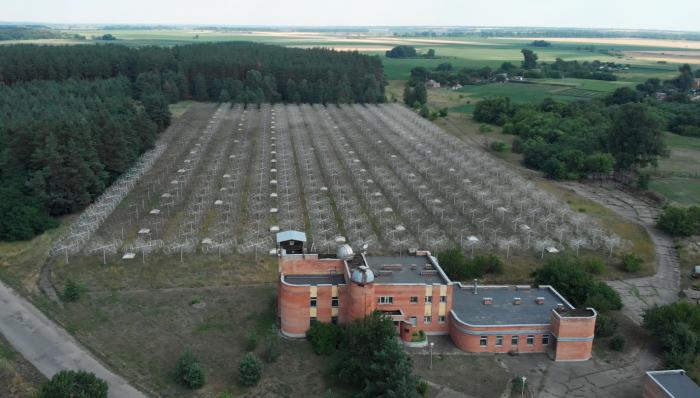
Returning to the system’s characteristics, URAN-2 has a beam that is approximately 8 times wider than that of UTR-2. At the central frequency of the range, UTR-2 has a beam of about 0.5 degrees, while the station near Poltava has a beam of approximately 4 degrees, although the precise value depends inversely on the frequency at which it operates. These values are sufficient for carrying out many of the tasks they are currently focused on.
For instance, URAN-2 is used when tracking the Juno spacecraft, which orbits Jupiter, for wideband research on its radio emissions or for Solar Orbiter and Parker Solar Probe missions, which study solar wind and radiation while being in close proximity to our Sun.
In the “decametric” radio sky, there are not as many powerful sources as those visible in the bright synchrotron radiation of relativistic electrons in the magnetic fields of our galaxy, which have temperatures of tens or hundreds of thousands of degrees. However, even though URAN-2 has a smaller effective area compared to UTR-2, it still serves a wide range of tasks. Those include providing ground support for space missions, constant monitoring of the solar corona (recording solar flares of all types), studying Jupiter’s radio bursts, observing the radio recombination lines of carbon, and investigating pulsars and transients. Additionally, it is used for searching for radio emissions from lightning in Saturn’s atmosphere and other planets in the solar system.
Interferometric studies are conducted with the other three URAN radio observatories.
Some words about three other stations
URAN-3, located near the Shatsky Lakes, has 256 dipole antennas, URAN-4 near Odessa has 128, and URAN-1 in Zmiyiv in Kharkiv region has 96. URAN-1 was the first station and its location didn’t allow for more antennas. All three stations are currently operational, and research on them continues.
It’s important to note that all powerful radio sources that emit in the corresponding frequency range have already been recorded using UTR-2. So, without UTR-2, researchers are now verifying and improving models of cosmic sources using these archival data and studying large-scale objects like the Sun, the Cassiopeia A supernova remnant, and the Lyra A radio galaxy in interferometer mode with a short baseline, where the radio telescope acts like several smaller telescopes.
All URAN stations, apart from classical interferometry, are used in the research of interplanetary plasma and ionosphere by analyzing scintillations, monitoring the variability of radio emission from selected sources, and studying the large-scale structure of the galactic background.
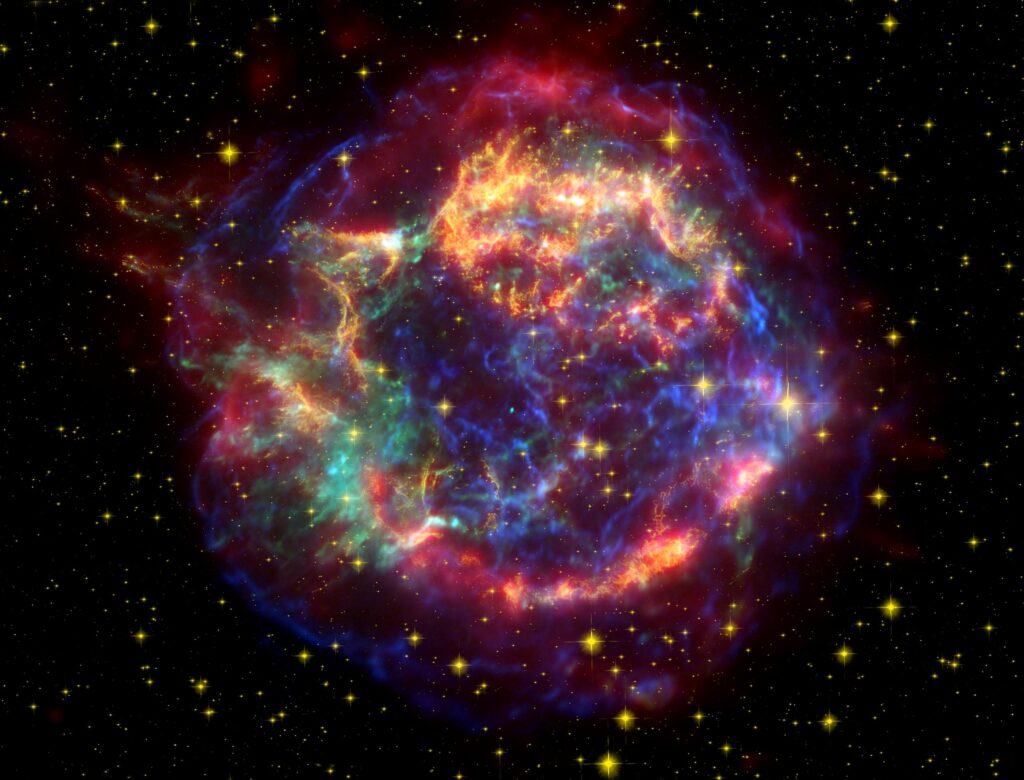
Parker Solar Probe and Event Horizon Telescope
The lower the frequency, the more rarefied plasma layers a radio telescope operating at that frequency can observe. The Parker Solar Probe registers higher frequencies and primarily investigates the visible surface of our star. Meanwhile, we observe what happens in the most distant regions of the solar corona, thus significantly complementing its data.
The use of instruments working at different frequencies allows tracking the path of coronal mass ejections at large distances and understanding where they are going. However, the data we obtain must be “decoded” by comparing it with other solar radio telescopes worldwide operating at different frequency bands.
Computational data processing for interferometric observations is less resource-intensive with five stations compared to other world radio interferometric networks like the American VLBI or European EVN. These networks had to do much more work to generate images from the data.
It’s worth mentioning that low-frequency radio astronomy is rapidly developing worldwide. This includes the largest LOFAR interferometer in the Netherlands and several other European countries, which operates at frequencies close to URAN. Despite low frequencies (with a decrease in resolution with frequency), the large number of stations (currently over fifty in eight countries) allows for sufficiently detailed radio imaging.
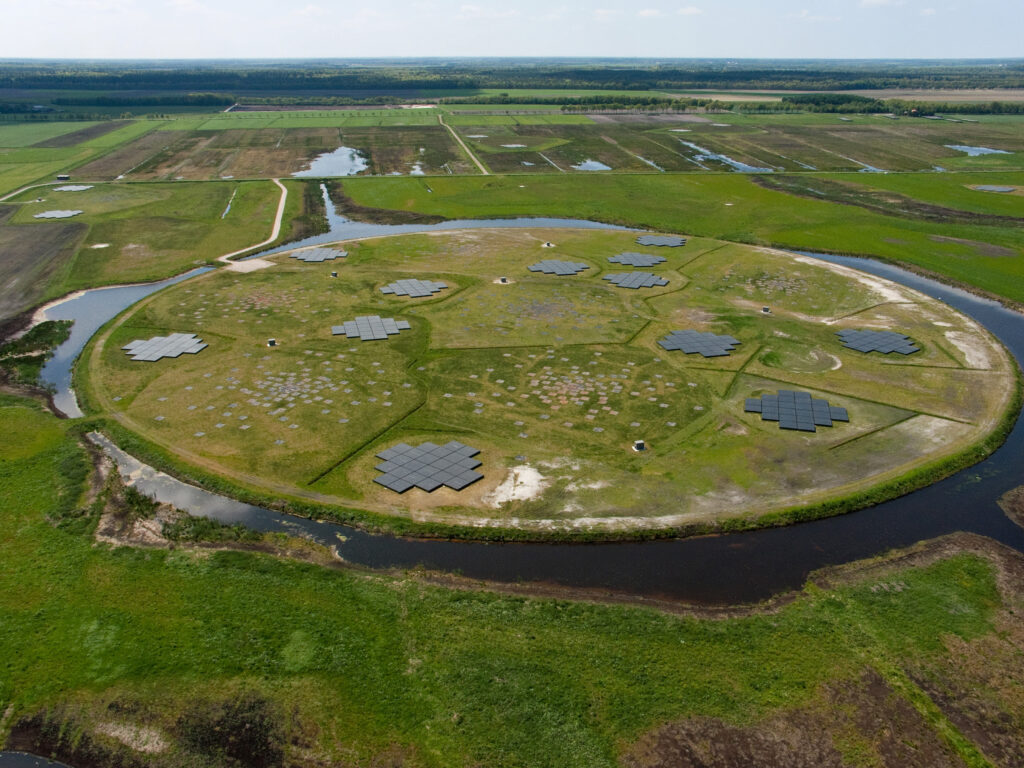
To generate images of objects similar to those obtained by the Event Horizon Telescope, we need data from both high and low resolution. To achieve this, we need both large and small baselines, i.e., distances between stations. If we had more stations at distances ranging from hundreds of meters to 400-500 kilometers from each other, it would be possible. With a small number of telescopes, we can only build a model or get small cross-sections of the object.
What future holds for the URAN system?
Hence, the collaborative work of the URAN system radio telescopes with LOFAR is crucial. This will allow us to participate in constructing high-quality low-frequency radio images, while LOFAR will provide the most remote stations to further enhance resolution. This requires data format coordination, and it would be advisable to expand the URAN working frequency range to 40 or 50 MHz.
We’ve discussed imaging, which involves two coordinates, but there’s a third one — distance, often associated with the width of the frequency range. Often, to create a high-quality image, we need to narrow down the frequency band. This is because what is clear at a specific frequency can become blurry when you widen the band. This is due to the characteristics of the radiation source. And research isn’t limited to just obtaining an image.
Currently, expanding the frequency band in radio astronomical research is achieved through the use of sections of the new HURT (Huge Ukrainian Radio Telescope) radio telescope. Its frequency range is 8-80 MHz, but only individual sections have been built so far, with an effective area of ~500 square meters. By using URAN in the 8-33 MHz range and HURT for higher frequencies, much more information about physical events in cosmic sources can be obtained.
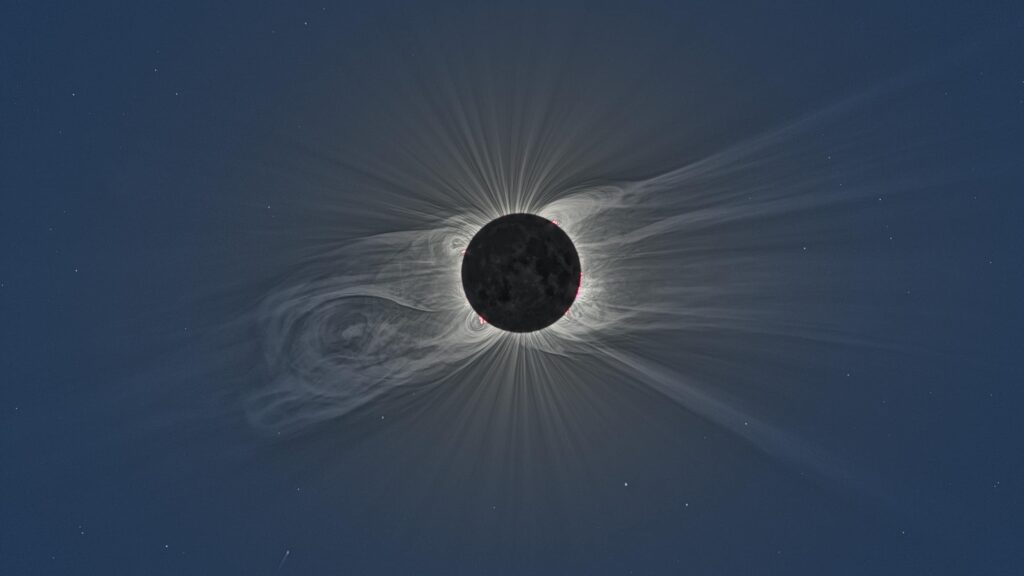
We can focus on studying the entire spectrum and apply this technique to research the Sun. For instance, we can see the beginning of an event at 80 MHz and at a distance of a fraction of a solar radius from the surface, and then observe it at lower frequencies as a coronal mass ejection moves away from our star. Sometimes we observe how particle flows in the solar corona twist and fall back.
Therefore, studying the entire spectrum allows us to learn how events develop. If two coordinates of the signal source are known along with the characteristics of its spectrum, we can calculate the third and obtain a three-dimensional understanding of the process.
Some Words About UTR-2 and URAN as a National Heritage
Anyway , the URAN system is incomplete without its largest telescope. That’s why we are trying to restore UTR-2 as quickly as possible. New developments in amplification and receiving techniques will significantly increase its sensitivity. New digital phasing schemes will provide mapping and interferometry capabilities with a large number of small baselines (within the distances of UTR-2’s subsections). This involves splitting UTR-2 into 68 30-element sections, which will allow for flexible configuration changes and mapping. The knowledge gained from UTR-2 restoration will then be transferred to the URAN system to increase its sensitivity as a whole.
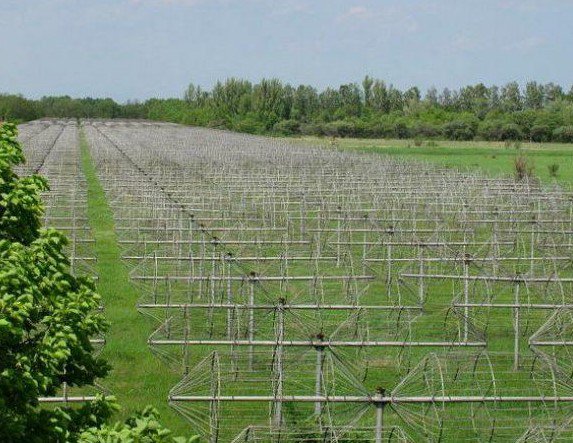
Thanks to its characteristics, primarily the enormous effective area, the URAN system can become a crucial part of the large European low-frequency radio telescope.
